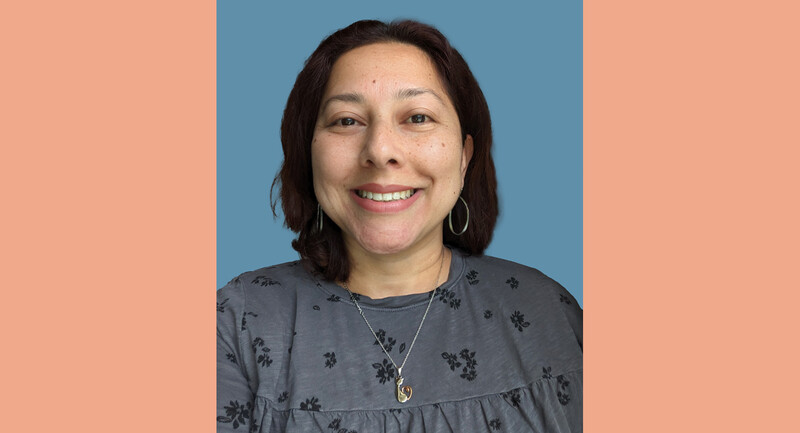Murfreesboro City Schools (MCS) sits in the geographic center of Tennessee. It’s the 21st largest (TN Department of Education, n.d.) and the 5th most diverse school district in the state (Niche, 2023), and it’s home to the most diverse public elementary school in Tennessee. With 13 schools, more than 9,400 preK–6th grade students, and nearly 2,000 employees, our elementary school district is committed to ensuring each student’s academic and personal success.
We know that the best thing we can do for students is ensure they have a healthy, supported, and well-trained teacher in front of them each day. Research shows that the classroom teacher matters more to student achievement than any other school-related factor (Opper, 2019). This brings us to the teacher shortage we’re facing in Tennessee, a shortage that not only challenges day-to-day school operations, but also has devastating ripple effects on an entire generation of school-age children. Tennessee State Department data show that in the 2013–2014 cohort of teachers, 4 in every 10 teachers left their school over a five-year period. In priority schools—consistently low-performing schools as designated by the state of Tennessee—this number jumps to 4 in every 10 teachers leaving during a single year (Collins & Schaaf, 2020).
It’s easy to see why some of our best educators may be looking outside of education for their next job. Coming out of the pandemic, we’re asking more of them than ever before. We’re challenging them to become masters of high-quality instructional materials, meet the growing social-emotional needs of all their students, and remain focused on crucially important work despite the highly politicized noise around public education. Many educators may feel that their job and working conditions are something done to them, as opposed to something done with them. This is hardly an environment that will encourage teachers to stay in the profession and in our classrooms.
The Challenge
As we emerged from the pandemic in 2021, we in district leadership reflected on these trends and knew we had work to do. We wanted to improve the organizational climate and culture for our teachers in hopes they’d be more likely to want to stay on. At the time, our district didn’t have a system for teacher voice and representation. If teachers had a question, an idea, or a concern for district-level leaders, communication was ad hoc; there was no consistent method for sharing their concerns, nor for leaders to respond to teacher needs. Additional anecdotal feedback from teachers showed us that they didn’t feel a sense of agency and empowerment. We knew that had to change.
We wanted to send a clear message to teachers that we heard, honored, and valued them; we wanted a structure that would enable them to provide insight into district work before we finalized our plans. Because every decision we make in school districts affects the classroom, we wanted to make sure that those leading the classroom had agency and voice in those decisions. Our solution was to create the MCS Teacher Advisory Council. Composed of cohorts of our schools’ Teachers of the Year, the teachers would provide insight into and advice on district-level policy.
From the outset, we planned this program carefully to avoid possible pitfalls. For example, we wanted to avoid any “us versus them” mentality and focus instead on productive ways to discuss grievances. We also wanted to make sure the council had an explicit purpose, and members were clear about their roles and responsibilities. Moreover, we wanted council leaders to choose advisory topics critical to the district’s mission and that required teacher input, so the agendas weren’t trivial and a waste of teachers’ time.
The Model
We built our Teacher Advisory Council to avoid these challenges. We invite each of our 13 schools’ two Teachers of the Year to serve on the council for a “year of service.” This membership model provides a pool of 26 possible members and means that each school gets equal representation on the council. Because Teachers of the Year are nominated and chosen by teachers in each school, our members hold both proven instructional expertise and the respect of their peers. In addition, by combining membership on the council with the Teacher of the Year award, we have elevated recognition of this award, making it a yearlong event instead of a one-day ceremony. (Districts that don’t have a strong teacher recognition program can still emulate this model by ensuring that participants hold professional credibility, are nominated by their peers, and are able to engage positively with the district.)
We start the year by holding an informational meeting in early summer so our Teachers of the Year clearly understand the roles and responsibilities of being a Teacher Advisory Council member. We then formally invite them to the council; approximately 50 percent of invitees accept the invitation. Because there are two Teachers of the Year for each school, this helps ensure that each school has at least one representative participating on a regular basis.
Throughout the year, teachers attend our monthly 90-minute meetings at our district office with co-author Trey, who is the director of schools, and co-author Cathy, who is the district coordinator for this committee. As appropriate, other district staff participate based on the topic of discussion. Although teachers are not paid a stipend for this time, they do receive professional development credit.
Our monthly meetings have a consistent structure that ensures a balance of advisory and learning for teachers focusing on policy and advocacy. We begin each meeting with an open question-and-answer time. We reach out to members in advance to ask them to gather questions from their colleagues, and Trey answers each question at the beginning of every meeting. Teacher members are responsible for taking the information back to their schools, making the teacher leadership aspect of membership highly visible.
During the advisory portion of the meeting, teachers share input on topics they can influence, such as the district budget, the academic calendar, the strategic plan, and school safety. We determine the topics before the school year starts, but also leave room for issues that may arise during the year. We gather teacher insights, share those insights with other stakeholders as needed (such as district leadership, principals, and the school board), weave them into district policymaking, and consistently report back to the council on how we used the information.
For example, members expressed concern about professional development days that fell in the middle of the school week. They felt that the disruption in instruction for students could offset the gains of additional planning time. Because of that, the district now only schedules professional development days on Mondays or Fridays so students have four continuous days of instruction. Our goal is to make advisory loops like this visible, so teachers see how and where we’re using their input. At times, such as with our academic calendar, a member of the council presents the final product to our board of education, creating a further sense of teacher agency.
However, what really makes our Teacher Advisory Council unique is the advocacy component we include. All too often, teachers are not invited to the policy table. When they are, they might not know what to say, how to say it, or whom to say it to. For that reason, we plan learning in each meeting to equip teachers with the policy and advocacy know-how they need to speak up effectively. From understanding the role of the local school board to how our state government functions, teachers learn about the levels of policy that affect their work. We encourage them to engage with stakeholders, and we teach them advocacy skills, such as how to craft a platform, develop an elevator speech, compose a letter to a legislator, and tell an advocacy story from their classroom to decision-makers that shows the effect of policy on real students and teachers. This learning has led to more informed engagement on our council and prepares our teachers to advocate effectively on issues that are important to them. We are hopeful that this will make our teachers go-to thought partners for policymakers.
Educators may feel that their working conditions are something that are done to them, as opposed to something done with them.
The Gains
We’re entering the third year of our Teacher Advisory Council, and we have learned much along the way. Feedback from teachers at meetings is consistently high. They report that they feel a sense of agency and representation that they didn’t feel before and that we have a clear system of communication that honors all voices.
Because of teachers’ input, we have changed our academic calendar to allow for a full week off at Thanksgiving, restructured professional development days as previously noted, made sound decisions about technology purchases and allocations by specifying which grade levels truly need to have 1:1 devices, and prioritized budgeting for mental health supports. Indeed, our school board members have come to expect to hear what our Teacher Advisory Council has to say about matters of policy and planning. One council member invited a state legislator into her classroom to showcase the exemplary work her students were doing, and another has gone on to serve in multiple state-level teacher leadership opportunities.
Through this experience, we’ve learned that many teachers want to stay involved with the council after their one-year term is up. We now communicate regularly with these teachers to share leadership opportunities, school board meeting summaries, and invitations to priority council meetings.
Because of the council, our teachers are seeing their input implemented in real ways throughout our district. Council members are choosing to stay in teaching and remain involved in our district. In fact, 100 percent of our former council members are still working in the district today. Our message is clear: Your voice matters, and our work is better when we seek feedback from those who are affected by the decisions we make at the district level.
The Teacher Advisory Council has given us not only an avenue to work with highly influential teachers in our district, but also a chance to grow their knowledge about why things in education happen the way they do. The council has elevated our work and given us on-the-ground champions in schools who are carrying crucial messages back to their colleagues in ways that district staff would never have been able to do.
As one teacher participant noted, “My favorite things about the Teacher Advisory Council are the authenticity, the openness to share, the collaboration with other educators, and knowing that teacher voices are valued!” The council is more than just a partnership; it’s a system for agency that guarantees teachers a place at the table—and that equips them to engage powerfully when they’re there.
Reflect & Discuss
➛ Do teachers in your school or district feel they have agency? How do you know?
➛ Does your school or district have an effective system for teacher voice and representation?
➛ What first steps might you take to set up a Teacher Advisory Council in your district?









